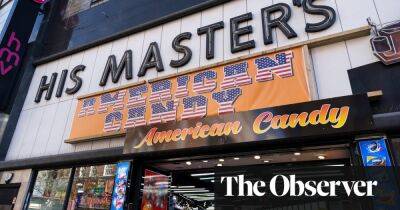Fashion brands’ profits hit as customers return worn clothing
Asos is blaming a “significant increase” in returns from shoppers as the big reason for its latest profit warning – the third in less than a year.
It is not alone. Retailers across the fitting-room-free world of fast fashion, where ordering online means buying before trying, are processing a deluge of unwanted items. “Everyone is experiencing a swamping of returns,” said Kayla Marci of Edited, a retail technology company. “It spiked after Christmas, and is now higher than it was this time last year.”
This isn’t the first time fashion profits have been dented by buyer’s remorse. In 2019, Asos and Harrods blocked shoppers whom they believed were “wardrobing”, ie returning worn purchases.
Certainly, wardrobing is a lot easier to do in a post-pandemic world, said the retail analyst Clare Bailey. “You could order a lovely jacket and pop it on for a Zoom call, then it can go straight back, with the retailer bearing the cost.”
Without conclusive data, as much can’t be ascertained, however. “It’s really hard to put shoppers in one basket,” the retail analyst Natalie Berg said.
“Wardrobing or not, what shoppers are doing is being more critical of what they keep,” Bailey said. “They’re still ordering a large amount of clothes but then they think: ‘I cannot justify this. My budget is squeezed.’ They’re more focused in what they keep.”
The coronavirus pandemic enabled consumers to be “very comfortable ordering a £1,000’s worth of clothing and only keeping £200”, Bailey said.
The online boom also prompted a rise in “bracketing”, Marci said (when a consumer buys different sizes and returns all but the one that fits). Levi’s has attributed 40% of its returns to sizing issues.
Bailey estimated that the cost of delivery to brands had doubled
Read more on theguardian.com



![Can Uniswap [UNI]’s short sprint turn to a green marathon in the coming months?](https://finance-news.co/storage/thumbs_400/img/2022/7/16/33675_x6f0w.jpg)


![Cardano [ADA] would need to climb past this level to break its bearish movement](https://finance-news.co/storage/thumbs_400/img/2022/7/16/33672_jijg.jpg)
![Analyzing the challenges Dogecoin [DOGE] may face trying break free from Bitcoin [BTC]](https://finance-news.co/storage/thumbs_400/img/2022/7/16/33671_lm8a0.jpg)


![Bitcoin [BTC] maximalists are closely looking at these factors with $21k in sight](https://finance-news.co/storage/thumbs_400/img/2022/7/16/33668_i5f6.jpg)












